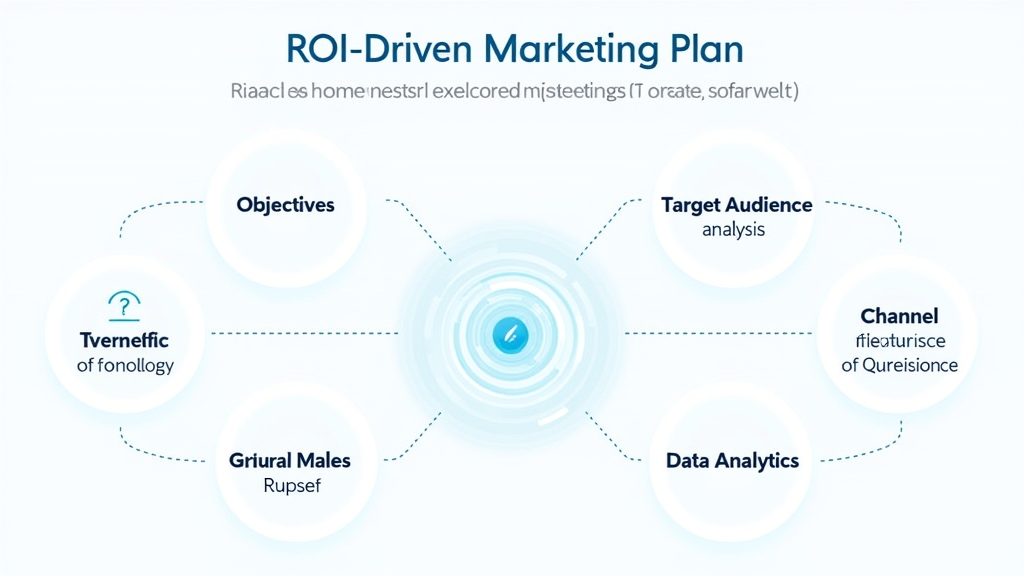ROI-Driven Marketing Plans: Maximizing Your Investment for Success
Introduction
Return on Investment (ROI) is a crucial concept in marketing that measures the effectiveness of your campaigns. By developing ROI-driven marketing plans, you can ensure that every dollar spent contributes to your business’s growth and success. Understanding how to maximize your investment through strategic planning is essential in today’s competitive landscape. This article will guide you through the key components and strategies necessary for creating effective marketing plans focused on achieving high ROI.
Understanding ROI in Marketing
Defining Return on Investment (ROI)
Return on Investment (ROI) is a performance measure used to evaluate the efficiency of an investment. In marketing, it helps businesses determine how much profit they make from their marketing efforts compared to what they spend. The formula for calculating ROI is simple:
ROI = (Net Profit / Cost of Investment) × 100This calculation allows you to see if your marketing strategies are worth the money invested.
The Role of Metrics in Measuring ROI
Metrics play a vital role in measuring ROI because they provide data that helps assess performance. Common metrics include conversion rates, customer acquisition costs, and lifetime value of customers. By analyzing these metrics, you can identify which campaigns yield the best results and adjust your strategies accordingly.
Key Components of an Effective Marketing Plan
Setting Clear Objectives
Setting clear objectives is fundamental when creating an effective marketing plan. These objectives should be specific, measurable, achievable, relevant, and time-bound (SMART). For example, instead of saying “increase sales,” aim for “increase sales by 20% over the next quarter.” Clear goals help focus your efforts and make it easier to measure success.
Identifying Target Audience
Understanding who your target audience is will significantly impact your marketing efforts. Conduct market research to gather insights about demographics, preferences, and behaviors of potential customers. Knowing your audience allows you to tailor messages that resonate with them and improve engagement rates.
Choosing the Right Channels
Selecting appropriate channels for reaching your audience is crucial for maximizing ROI. Different channels—such as social media, email marketing, or search engine advertising—have unique strengths. Analyze where your target audience spends their time online and choose channels that align with their habits.
Strategies for Creating ROI-Driven Marketing Plans
Leveraging Data Analytics
Data analytics provides valuable insights into customer behavior and campaign performance. Use tools like Google Analytics or social media insights to track user interactions with your content. Analyzing this data helps refine strategies based on what works best for driving conversions.
Utilizing A/B Testing for Optimization
A/B testing involves comparing two versions of a campaign element—like an email subject line or ad copy—to see which performs better. This method allows you to optimize various aspects of your campaigns based on real user feedback rather than assumptions.
Implementing Multi-Channel Strategies
Using multiple channels can enhance visibility and reach more potential customers effectively. A multi-channel approach ensures that you’re not relying solely on one source but diversifying efforts across platforms like social media, email newsletters, and websites.
Tools and Technologies for Tracking Marketing ROI
CRM Systems and Their Benefits
Customer Relationship Management (CRM) systems help manage interactions with current and potential customers efficiently. They allow businesses to track leads throughout their journey while providing insights into customer behavior patterns—essential information when calculating ROI.
The Impact of Marketing Automation Tools
Marketing automation tools streamline repetitive tasks such as email campaigns or social media posting while providing analytics features that track engagement levels automatically. These tools save time while ensuring consistent communication with leads—a critical factor in improving overall return on investment.
Case Studies: Successful ROI-Driven Marketing Plans
Examples from Leading Brands
Many leading brands have successfully implemented ROI-driven marketing plans resulting in significant profits. For instance, Coca-Cola uses targeted digital ads tailored specifically toward different demographics based on extensive market research data collected over years—resulting in higher engagement rates across various platforms.
Lessons Learned from Failed Campaigns
Not all campaigns succeed; learning from failures can also provide valuable lessons about what not to do when planning future initiatives! One notable example includes Pepsi’s controversial advertisement featuring Kendall Jenner—a misstep due largely due lack understanding consumer sentiment at that moment led them facing backlash instead positive reception!
Common Challenges in Achieving High ROI
Budget Constraints
Budget constraints often pose challenges when trying achieve high returns investments within limited resources available! It’s important prioritize spending wisely focusing areas likely yield greatest impact rather spreading too thinly across numerous projects without clear direction!
Market Saturation and Competition
In today’s crowded marketplace filled competitors vying attention consumers standing out becomes increasingly difficult! To combat saturation consider differentiating offerings unique selling propositions communicate effectively why choose brand over others competing similar products/services!
Conclusion
Creating effective ROI-driven marketing plans is essential for maximizing investments in today’s competitive environment. By setting clear objectives, identifying target audiences accurately choosing suitable channels implementing data-driven strategies—you can significantly improve outcomes! Embrace these best practices moving forward towards future success!
📢 Explore More: Continue Your Journey!
If this article helped you understand how to create effective marketing plans focused on maximizing returns read The Importance of Customer Engagement! It covers powerful insights into engaging customers effectively helping boost overall business growth.














![NEEWER 55W 18"/45cm Ring Light Kit [New Version], 5600K Dimmable ...](https://m.media-amazon.com/images/I/414QLqvZWLL._AC_.jpg)








